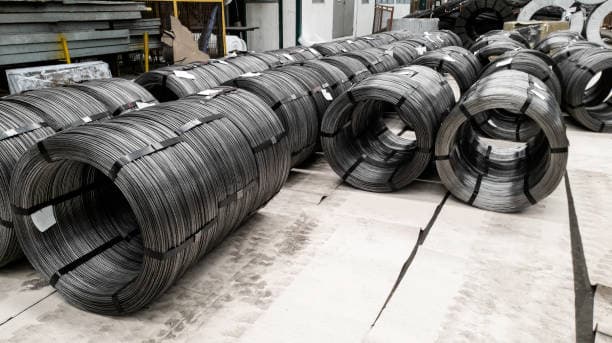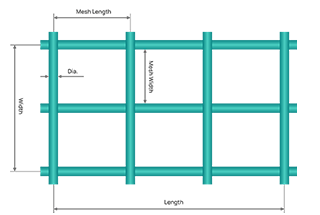
How much does your wire rod actually weigh? Understanding this is crucial for any project that relies on precise material usage. This article introduces a wire rod weight calculator designed to help you easily determine the weight of wire rods based on their diameter and length. With this tool, you’ll be able to plan your projects more accurately, avoiding costly mistakes and ensuring efficient use of resources. Dive in to learn how to use this calculator and optimize your material estimates.

Imagine you’re an engineer meticulously planning a structural project, a logistics manager calculating shipping costs, or a DIY enthusiast embarking on your next big creation. In each of these scenarios, accurately determining the weight of wire rods is crucial. This is where a wire rod weight calculator becomes an invaluable tool. Understanding how to use this calculator not only saves time but also ensures precision, helping you avoid costly mistakes and inefficiencies.
In this comprehensive guide, we will demystify the process of using a wire rod weight calculator. Whether you’re working with copper, steel, or other metals, you’ll learn how to account for material density and volume, navigate different shapes and dimensions, and handle unit conversions seamlessly. We’ll also explore practical applications, from engineering and design to purchasing and logistics, ensuring you have all the knowledge you need to leverage this tool effectively. Ready to dive in and master the art of calculating wire rod weights? Let’s get started!
Wire rod is a semi-finished steel product characterized by its small diameter and coiled form. It serves as a crucial intermediate material in various manufacturing processes. Typically, wire rod has a circular cross-section with diameters ranging from 5 to 19 mm, with the most common sizes falling between 6 and 9 mm. The lower limit of wire rod diameter is determined by the minimum size achievable through the hot-rolling process.
Produced through a continuous hot-rolling method, wire rod starts as billets that are heated to high temperatures (usually around 1100-1200°C) and then passed through a series of reducing stands. This process gradually decreases the cross-sectional area while increasing the length, resulting in the final wire rod product. The high-speed rolling and controlled cooling during production significantly influence the wire rod’s microstructure and mechanical properties.
Wire rod serves as a versatile feedstock for numerous downstream applications, including wire drawing, cold heading, and various forming operations. Its quality and characteristics are critical for end-use performance in industries such as automotive, construction, and consumer goods manufacturing.

Wire rod encompasses a diverse range of products, each tailored for specific applications in the metal fabrication industry. Low carbon steel wire rod, commonly referred to as soft wire rod, typically contains 0.06-0.25% carbon content, offering excellent formability and weldability. In contrast, medium (0.25-0.60% C) and high carbon (0.60-1.00% C) steel wire rods are classified as hard wire rods, providing increased strength and wear resistance.
While wire rod serves primarily as the raw material for wire drawing processes, its versatility extends to direct applications in construction as reinforcing bars and to the manufacturing of precision mechanical components. The choice between soft and hard wire rods depends on the desired balance of ductility, strength, and machinability in the final product.
Stainless steel wire rod, composed of various grades (e.g., 304, 316L, 430), is crucial for producing corrosion-resistant wire products. It finds extensive use in the fabrication of stainless steel wire, high-performance spring wire, cold-headed (upset) wire for fasteners, and wire rope for marine and architectural applications. The inherent properties of stainless steel, such as corrosion resistance and high strength-to-weight ratio, make it indispensable in demanding environments.
Advancements in rolling technology have led to the development of special-shaped wire rods, including square, hexagonal, and fan-shaped profiles. These geometries offer advantages in specific applications, such as improved interlocking in concrete reinforcement or enhanced torque transmission in mechanical systems. The upper limit of wire rod diameter has been pushed to 38 mm, catering to heavy-duty applications, while coil weights have dramatically increased from traditional 40-60 kg spools to massive 3000 kg bundles, significantly enhancing production efficiency and reducing handling costs.
Recent innovations in post-rolling heat treatment technologies, such as controlled cooling and in-line quenching and tempering, have revolutionized wire rod quality. These processes effectively minimize oxide scale formation on the rod surface, typically reducing scale thickness from 10-15 μm to less than 5 μm. This improvement not only enhances surface quality but also optimizes the microstructure, leading to superior mechanical properties, improved drawability, and reduced die wear in subsequent wire drawing operations.
Hot-rolled plain round steel bars, commonly referred to as wire rods, are essential components in various industrial applications. These cylindrical steel products, characterized by their round cross-sections and smooth surfaces, are primarily classified into two grades according to national standards: HPB235 and HPB300. These designations correspond to the minimum yield strength of the material, with HPB235 having a yield strength of 235 MPa and HPB300 at 300 MPa.
In the steel industry, wire rods can be supplied based on either actual weight or theoretical weight, as permitted by national standards. However, market practice predominantly favors delivery based on actual weight, which accounts for minor variations in diameter and density that may occur during the manufacturing process.
Wire rods are further categorized into two main types:
Despite this classification, the weight calculation formula remains consistent for both types. The wire rod weight calculator provided below is a valuable tool for accurately determining the weight of wire rods, which is crucial for inventory management, cost estimation, and logistics planning in steel-related industries.
This calculator takes into account key parameters such as the wire rod’s diameter, length, and material density to provide precise weight calculations. It’s important to note that while the calculation method is uniform, the slight variations in material properties between high-speed and ordinary wire rods may result in minor differences in the final weight for the same dimensions.
Related Tool: Steel Weight Calculator
The following chart provides a comprehensive overview of wire rod weights across different diameters, serving as a valuable reference for manufacturers and engineers.
| Diameter | Weight (kg/m) | Diameter | Weight (kg/m) |
| 5.5 | 0.186 | 13 | 1.04 |
| 6 | 0.222 | 14 | 1.21 |
| 6.5 | 0.26 | 15 | 1.39 |
| 7 | 0.302 | 16 | 1.58 |
| 8 | 0.395 | 17 | 1.78 |
| 9 | 0.499 | 18 | 2 |
| 10 | 0.617 | 19 | 2.23 |
| * 11 | 0.746 | 20 | 2.47 |
| 12 | 0.888 | 21 | 2.72 |
| 22 | 2.98 | 63 | 24.5 |
| * 23 | 3.26 | * 65 | 26 |
| 24 | 3.55 | * 68 | 28.5 |
| 25 | 3.85 | 70 | 30.2 |
| 26 | 4.17 | 75 | 34.7 |
| * 27 | 4.49 | 80 | 39.5 |
| 28 | 4.83 | 85 | 44.5 |
| * 29 | 5.18 | 90 | 49.9 |
| 30 | 5.55 | 95 | 55.6 |
| * 31 | 5.92 | 100 | 61.7 |
| 32 | 6.31 | 105 | 68 |
| * 33 | 6.71 | 110 | 74.6 |
| 34 | 7.13 | 115 | 81.5 |
| * 35 | 7.55 | 120 | 88.8 |
| 36 | 7.99 | 125 | 96.3 |
| 38 | 8.9 | 130 | 104 |
| 40 | 9.86 | 140 | 121 |
| 42 | 10.9 | 150 | 139 |
| 45 | 12.5 | 160 | 158 |
| 48 | 14.2 | 170 | 178 |
| 50 | 15.4 | 180 | 200 |
| 53 | 17.3 | 190 | 223 |
| * 55 | 18.6 | 200 | 247 |
| 56 | 19.3 | 220 | 298 |
| * 58 | 20.7 | 250 | 385 |
| 60 | 22.2 |
This chart assumes standard steel wire rod with a density of approximately 7.85 g/cm³. Weights may vary slightly depending on the specific alloy composition and manufacturing tolerances. For precise calculations in critical applications, it’s advisable to consult the material specifications provided by the supplier or conduct actual weight measurements.
Understanding these weight-to-length ratios is essential for:
Manufacturers working with wire rod should consider factors such as coil inner diameter, outer diameter, and packaging when planning for storage and handling. Additionally, proper storage conditions are crucial to prevent corrosion and maintain material quality, especially for alloy grades sensitive to environmental factors.
Below are answers to some frequently asked questions:
To calculate the weight of a wire rod, you need to determine its volume and then multiply it by the density of the material. Here’s a concise guide:
Using these steps, you can accurately calculate the weight of a wire rod for any given material and shape.
To calculate the weight of a wire rod, you can use the formula:
Weight= Volume x Density
For a round wire rod, the volume can be calculated as:
where ( D ) is the diameter of the wire and ( L ) is the length of the wire. Once you have the volume, multiply it by the density of the material (( \rho )) to get the weight:
This formula can be adapted for other shapes by calculating the appropriate cross-sectional area and then multiplying by the length and density. Ensure all measurements are in consistent units for accurate results.
The material type affects the weight calculation of a wire rod primarily due to its density. Different metals have distinct densities, which are essential for determining the weight accurately. For instance, copper has a density of approximately 8.9 g/cm³, while steel’s density can range from 7.86 g/cm³ for general steel to 7.95 g/cm³ for stainless steel. The weight is calculated using the formula: Weight = Volume × Density. Therefore, using the correct density value for the specific material is crucial for accurate results. Additionally, material-specific considerations, such as varying grades and compositions, can further influence the density and thus the weight calculation.
Yes, you can use a calculator to find the weight of wire rods in different shapes and dimensions. Wire rod weight calculators are designed to handle various shapes, including round, square, rectangular, and hexagonal rods. These calculators typically require you to input the shape, material type, and dimensions of the wire rod. By entering these details, the calculator uses predefined formulas and material densities to compute the weight accurately. This tool is particularly useful for engineers, designers, and hobbyists who need precise weight calculations for project planning, purchasing, logistics, and DIY projects.
To convert between different units of measurement for weight calculations, you need to use appropriate conversion factors. The general formula for conversion is:
Starting Value x Conversion Factor= Converted Value
For example, to convert kilograms to pounds, you use the factor (1 kg = 2.20462 lb}). So, if you have 5 kilograms, the conversion would be:
Similarly, to convert pounds to kilograms, use the factor (1 \text{ lb} = 0.45359237 \text{ kg}). For 10 pounds, the conversion would be:
You can also convert between smaller units, such as grams and milligrams, using factors like (1 kg=1000 g) or 1g=0.001 kg). Online tools and conversion tables can simplify these conversions by providing quick and accurate results for multiple units. Using these methods ensures that you can accurately convert weights when using a wire rod weight calculator.








